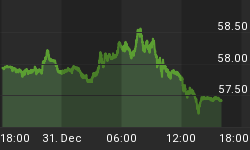Since the first weeks of August, 2009, I have stated the following in every weekly summary on equity market sentiment: "Investor sentiment remains extremely bullish. There is an upward bias until the extremes in bullish sentiment are unwound." I also mentioned early on that "there will be a bid under the market, and it will be tough to short or bet against this market for the foreseeable future." I would say that about characterizes the US equity markets over the past 2 months. Now, however, I am changing my tune.
I want to state that equities are for renting not owning at this juncture. I am not calling for a market top, but prices should trade more in a range, and if you intend to play on the long side, it will be important to maintain your discipline (for risk reasons) and buy at the lows of that trading range and sell at the highs to extract any profits from this market. The upward bias still remains as long as investor sentiment is still extremely bullish, but there is probably greater risk of a market down draft now than in past weeks. Thus new equity purchases are for renting not owning; protecting profits on existing positions is essential.
Several observations are worth noting that might keep an upward bias under this market as we have seen over the past 2 months. One, the "Dumb Money" indicator is still bullish to an extreme degree, and normally, such extremes in sentiment need to be unwound before seeing the market lower; I am not calling for a lower market, I am just stating that gains from this point will be difficult to hold on to. Two, the Rydex market timers are bearish on equities (more below), and it is unlikely for the market to roll over with these investors (as a representative sample of all investors) nailing the market top. Honestly, I don't see a market top, and a melt up is possible as short covering provides the market fuel.
Nonetheless and for now, I have to whistle a different tune. I see risk rising.
The "Dumb Money" indicator is shown in figure 1. The "Dumb Money" indicator looks for extremes in the data from 4 different groups of investors who historically have been wrong on the market: 1) Investor Intelligence; 2) Market Vane; 3) American Association of Individual Investors; and 4) the put call ratio. The "Dumb Money" indicator remains extremely bullish.
Figure 1. "Dumb Money" Indicator/ weekly
The "Smart Money" indicator is shown in figure 2. The "smart money" indicator is a composite of the following data: 1) public to specialist short ratio; 2) specialist short to total short ratio; 3) SP100 option traders. The "smart money" is neutral.
Figure 2. "Smart Money" Indicator/ weekly
Company insiders continue to sell shares to an extreme degree. See figure 3, a weekly chart of the S&P500 with the Insider Score "entire market" value in the lower panel. From the InsiderScore report: "Transactional volume slowed as trading windows continued to close ahead of Q3 2009 earnings announcement. Those insiders who were free to conduct transactions showed a distinct sell bias as our Weekly Score was in negative territory for the fourteenth-straight week and companies with selling outnumbered companies with buying for the twelfth-consecutive week."
Figure 3. InsiderScore Entire Market/ weekly
Figure 4 is a daily chart of the S&P500 with the amount of assets in the Rydex bullish and leveraged funds versus the amount of assets in the leveraged and bearish funds. Not only do we get to see what direction these market timers think the market will go, but we also get to see how much conviction (i.e., leverage) they have in their beliefs. Typically, we want to bet against the Rydex market timer even though they only represent a small sample of the overall market. As of Friday's close, the assets in the bearish and leveraged funds were greater than the bullish and leveraged; referring to figure 4, this would put the red line greater than green line.
On a side note, it is interesting how these investors got less bullish all last week as prices in the major indices rose. In fact, $250 million left the bullish and leveraged camp after Monday's rally; I guess these bulls had enough of a drubbing on the prior Thursday and Friday when the S&P500 lost about 30 points; they were happy to get out. After Monday, the market rose another 30 points.
Figure 4. Rydex Bullish and Leveraged v. Bearish and Leveraged/ daily
The last time we had the Rydex market timers betting against the market when it was near its highs was back on September 13. They were bearish for 4 days and the S&P500 rose 1.55% before these bears threw in the towel. Then as now I will state: "don't become fodder for the bulls".
In summary, it would seem very little has changed in the sentiment picture over the past weeks. The "Dumb Money" indicator is extremely bullish; the "Smart Money" is neutral; insiders are net sellers; and the Rydex timers seem to be on the wrong side of the trend. But even these trends can become exhausted over time and they won't persist forever. In the absence of a melt up, meaningfully higher prices will not be achieved until we see lower prices first. Therefore, stocks are for renting not owning.
















